Carbonate rocks
Type of resources
Topics
Keywords
Contact for the resource
Provided by
Years
Formats
Update frequencies
Scale
-
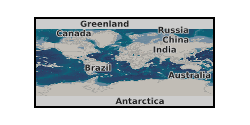
EPSRC grant EP/L012227/1: Development of Unified Experimental and Theoretical Approach to Predict Reactive Transport in Subsurface Porous Media. The effect of pore-scale heterogeneity on non-Darcy flow behaviour is investigated by means of direct flow simulations on 3-D images of Estaillades carbonate. The critical Reynolds number indicating the cessation of the creeping Darcy flow regime in Estaillades carbonate is two orders of magnitude smaller than in Bentheimer sandstone, and is three orders of magnitude smaller than in the beadpack. It is inferred from the examination of flow field features that the emergence of steady eddies in pore space of Estaillades at elevated fluid velocities accounts for the early transition away from the Darcy flow regime. Also available at https://www.digitalrocksportal.org/projects/10, DOI:10.17612/P73W2C. Further details can be found in Muljadi et al., Advances in Water Resources (2015), URL:http://dx.doi.org/10.1016/j.advwatres.2015.05.019.
-
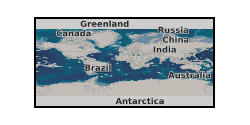
EPSRC grant EP/L012227/1: Development of Unified Experimental and Theoretical Approach to Predict Reactive Transport in Subsurface Porous Media. The effect of pore-scale heterogeneity on non-Darcy flow behaviour is investigated by means of direct flow simulations on 3-D images of Estaillades carbonate. The critical Reynolds number indicating the cessation of the creeping Darcy flow regime in Estaillades carbonate is two orders of magnitude smaller than in Bentheimer sandstone, and is three orders of magnitude smaller than in the beadpack. It is inferred from the examination of flow field features that the emergence of steady eddies in pore space of Estaillades at elevated fluid velocities accounts for the early transition away from the Darcy flow regime. Also available at https://www.digitalrocksportal.org/projects/10, DOI:10.17612/P73W2C. Further details can be found in Muljadi et al., Advances in Water Resources (2015), URL:http://dx.doi.org/10.1016/j.advwatres.2015.05.019.
-
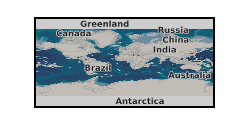
Fault lubrication during earthquake propagation in thermally unstable rocks in Central Italy Fieldwork pictures Fucino Basin Fault system: Castel di Monte fault Parasano fault Rocca Casale fault Venere fault Fieldwork pictures L’Aquila Fault System: Assergi fault Bitumen quarry Campo Imperatore Magnola fault Panoramic view Pettino fault Piani di pezza fault Vado di Corno fault Raw data from friction experiments. Links to associated papers: https://doi.org/10.1130/G35272.1 https://doi.org/10.1002/2015JB011914 http://dx.doi.org/10.1016/j.jsg.2013.10.008 http://dx.doi.org/10.1016/j.epsl.2011.09.001 http://dx.doi.org/10.1016/j.epsl.2015.09.002 http://dx.doi.org/10.1130/focus062013.1
-
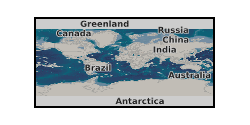
The datasets contain FIB-SEM and X-ray micro-tomographic images of a wettability-altered carbonate rock sample before and after dissolution with reactive CO2-saturated brine at reservoir pressure and temperature conditions. The data were acquired with the aim of investigating CO2 storage in depleted oil fields that have oil-wet or mixed-wet conditions. Our novel procedure of injecting oil after reactive transport has revealed previously unidentified (ghost) regions of partially-dissolved rock grains that were difficult to identify in X-ray tomographic images after dissolution from single fluid phase experiments. The details of image files and imaging parameters are described in readme file.
-
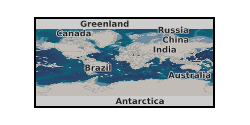
A laboratory µ-CT scanner was used to image the dissolution of Ketton, Estaillades, and Portland limestones in the presence of CO2-acidified brine at reservoir conditions (10 MPa and 50 °C) at two injected acid strengths for a period of 4 h. Each sample was scanned between 6 and 10 times at ~4 µm resolution and multiple effluent samples were extracted. See also paper: H.P. Menke et al. Geochimica et Cosmochimica Acta 204 (2017) 267-285. https://doi.org/10.1016/j.gca.2017.01.053.
-
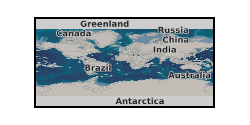
This dataset contains raw experimental triaxial testing data as outlined in "Castagna, A., Ougier‐Simonin, A., Benson, P. M., Browning, J., Walker, R. J., Fazio, M., & Vinciguerra, S. (2018). Thermal damage and pore pressure effects of the Brittle‐Ductile transition in Comiso limestone. Journal of Geophysical Research: Solid Earth, 123(9), 7644-7660.s, http://dx.doi.org/10.1029/2017JB015105". The data is provided in a .zip folder containing the files of 16 experiments that are accompanied by a README file for introduction. Files format is Microsoft Excel Worksheet (.xlsx) and data are tabulated. Each file contains the corresponding relevant sample’s details, and each column of data is clearly labelled, units included. For each experiment, time, radial and axial pumps volume displacements and pressures, top and bottom pore fluid pumps volume displacements and pressures, internal temperature, LVDT signals were recorded. Twenty right cylindrical samples of ‘Comiso’ limestone (Ragusa Formation; Sicily) were tested in triaxial compression at a range of confining pressures simulating depths of 290 m, 620 m, 1.2 km, and 2.0 km respectively, assuming an average density of the over-burden load of 2470 kg/m3. Prior to strength test, each sample was either oven dried (ca. 12 hours at 85 °C followed by cooling in a desiccator for 1 hour) or water saturated (samples in distilled water under vacuum for 24 hours). A subset of these samples has also been thermally treated at 150, 300, 450 and 600oC to induce thermal cracking prior to the mechanical testing. All tests were conducted at 10-5 s-1 axial strain rate in assumed drained conditions when relevant, and at room temperature. For saturated tests, the initial loading was applied in two steps, first by increasing Pc hydrostatically (σ1=σ2=σ3) until the desired confining pressure was reached, and then introducing pore fluid pressure, as per the functionality of the experimental set-up. The experiments were conducted by Drs A. Castagna, M. Fazio and P. Benson using the Snachez triaxial cell at the Rock Mechanics Laboratory of the University of Portsmouth. All responsible for the collection and initial interpretation of the data. Only 17 experiments are reported in this set of data; the missing 3 datasets are believed to be only available on the local computer storage of the triaxial apparatus used at that time.
-
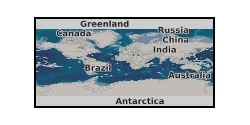
The datasets contain time-resolved synchrotron X-ray micro-tomographic images (grey-scale and segmented) of multiphase (brine-oil) fluid flow (during drainage and imbibition) in a carbonate rock sample at reservoir pressure conditions. The tomographic images were acquired at a voxel-resolution of 3.28 µm and time-resolution of 38 s. The data were collected at beamline I13 of Diamond Light Source, U.K., with the aim of investigating pore-scale processes during immiscible fluid displacement under a capillary-controlled flow regime. Understanding the pore-scale dynamics is important in many natural and industrial processes such as water infiltration in soils, oil recovery from reservoir rocks, geo-sequestration of supercritical CO2 to address global warming, and subsurface non-aqueous phase liquid contaminant transport. Further details of the sample preparation and fluid injection strategy can be found in Singh et al. (2017). These time-resolved tomographic images can be used for validating various pore-scale displacement models such as direct simulations, pore-network and neural network models, as well as for investigating flow mechanisms related to the displacement and trapping of the non-wetting phase in the pore space.
-
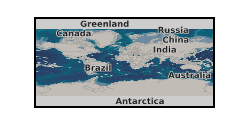
The datasets contain 5 stitched X-ray micro-tomographic images (grey-scale, doped, difference, segmented porespace and segmented micro-porespace with porespace) and 3 X-ray nano-tomographic images of a region of microporous porespace in Estaillades Limestone. The x-ray tomographic images were acquired at a voxel-resolution of 3.9676 µm using a Zeiss Versa XRM-510 flat-panel detector at 70 kV, 6W, and 85 µA with an exposure time of 0.037s and 64 frames. The X-ray nano-tomographic images were reconstructed using a proprietary filtered back projection algorithm from a set of 1601 projections, collected with the Zeiss Ultra 810 with 32nm voxel size using a 5.4keV energy quasi-monochromatic beam with an exposure time of 90s. The data was collected at Imperial College London and Zeiss Labs with the aim of investigating pore-scale microporosity in carbonates with a heterogenous pore structure. Understanding the effect of microporosity on flow is important in many natural and industrial processes such as contaminant transport, and geo-sequestration of supercritical CO2 to address global warming. These tomographic images can be used for validating various pore-scale flow models such as direct simulations, pore-network and neural network models for upscaling flow across scales.
-
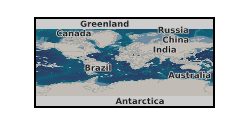
This dataset contains 10 three dimensional x-ray tomographic images of CO2-acidified brine reacting with Ketton limestone at a voxel size of 3.8 microns. It includes the unreconstructed projections (.txrm), the reconstructed images (.txm), and the masked and cropped segmented images (.am and .raw). The rock was imaged during dissolution 10 times over the course of 2.5 hours. Details can be found in Menke et al., 2015 in the journal Environmental Science and Technology.
-
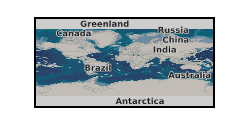
EPSRC grant EP/L012227/1: Development of Unified Experimental and Theoretical Approach to Predict Reactive Transport in Subsurface Porous Media. The effect of pore-scale heterogeneity on non-Darcy flow behaviour is investigated by means of direct flow simulations on 3-D images of Bentheimer sandstone and Estaillades carbonate. The critical Reynolds number indicating the cessation of the creeping Darcy flow regime in Estaillades carbonate is two orders of magnitude smaller than in Bentheimer sandstone, and is three orders of magnitude smaller than in the beadpack. Also available at https://www.digitalrocksportal.org/projects/11, DOI:10.17612/P77P49. Further details can be found in Bagus P. Muljadi, Martin J. Blunt, Ali Q. Raeini, Branko Bijeljic. The impact of porous media heterogeneity on non-Darcy flow behaviour from pore-scale simulation. Advances in Water Resources. 2015. http://dx.doi.org/10.1016/j.advwatres.2015.05.019.
 NERC Data Catalogue Service
NERC Data Catalogue Service